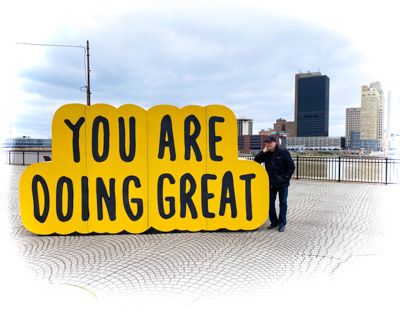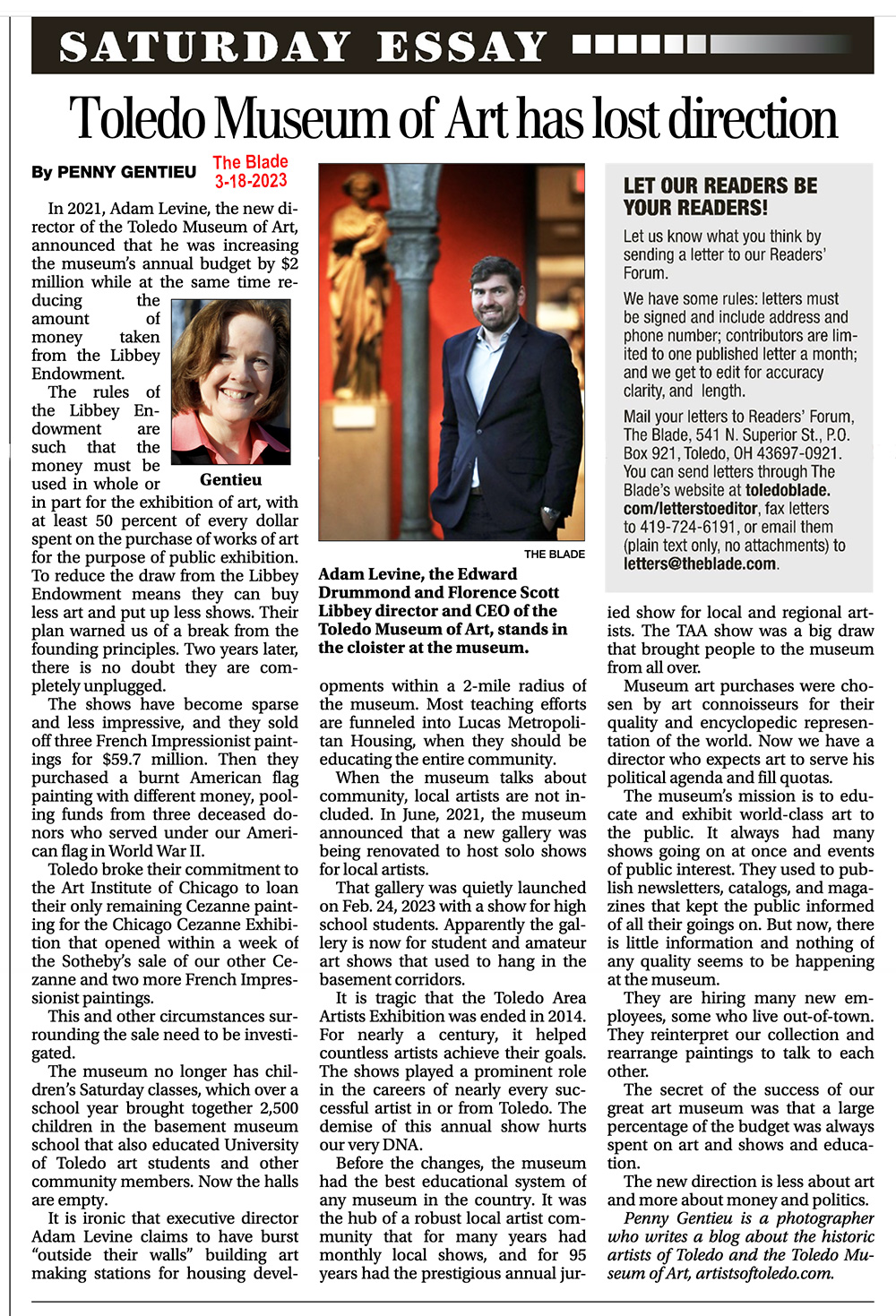Artists of Toledo is a website created by photographer Penny Gentieu
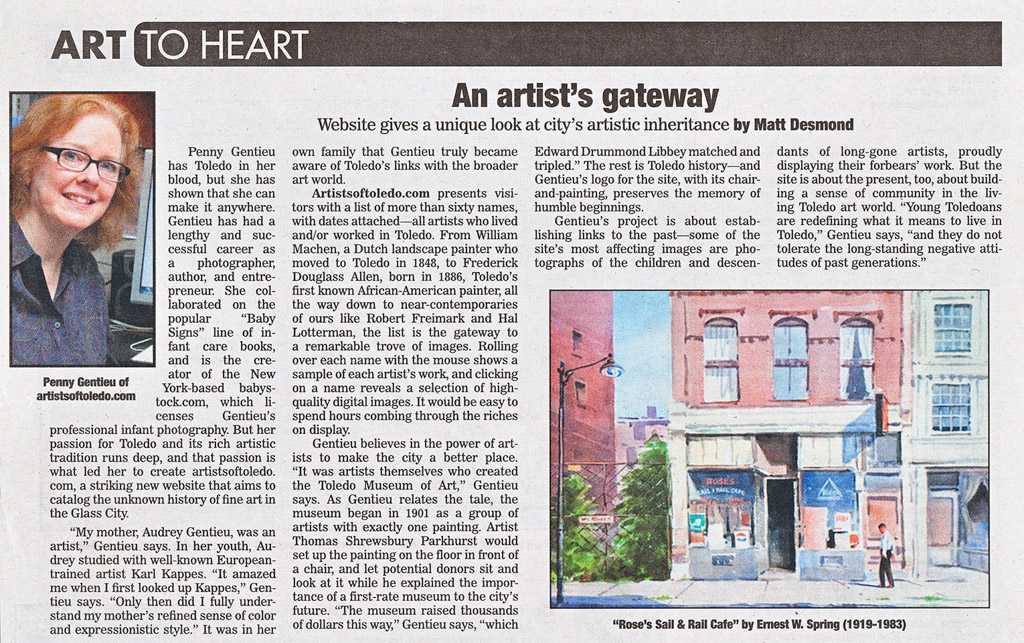
Toledo has a very special artistic history, and that is why I created this website about the historic artists of Toledo.

My mother, Audrey Pinkerton Gentieu (1922-2009) painted from age five until her last week of life, at age 86. This website is for her.
For artistsoftoledo.com’s logo, I used my mother’s painting and placed it on the floor in front of an empty chair, to demonstrate how the Toledo Museum of Art was founded by artists in 1901. Thomas Parkhurst (1853-1923) described the beginnings this way: one painting and a “filched” chair used by George W. Stevens to entice donors into giving, one by one, until the necessary amount was met to cover operating expenses for the new museum.
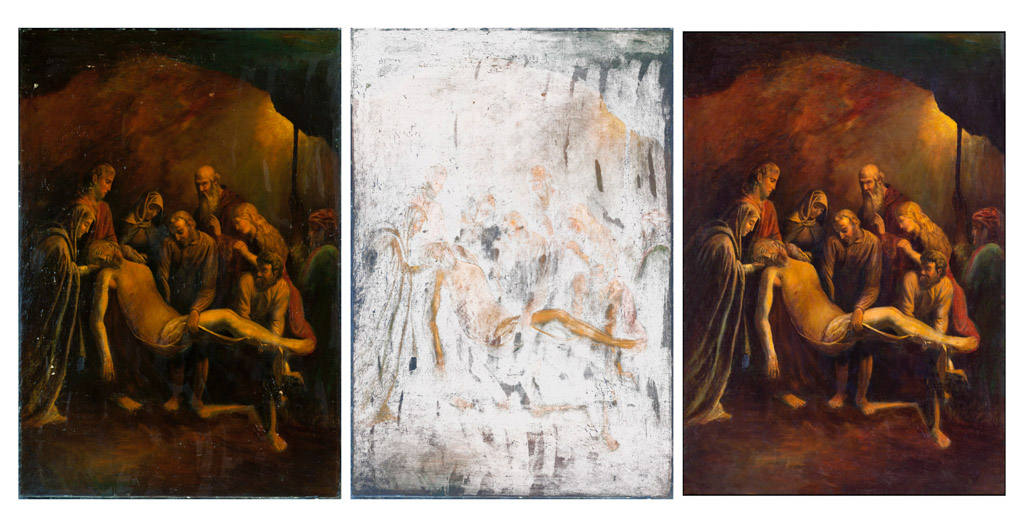
William Machen (1832-1911) was the first known artist after Toledo became a city. He was the first artist I researched. I bonded with his descendant, Jim Machen. William painted the first Stations of the Cross for the first church in Toledo, St. Francis de Sales Parish om Cherry Street. The paintings were in peril after a fire in the 1930’s and a poor restoration. They had been taken down from the walls by the time I began my journey with artistsoftoledo. For years, Jim tried to raise support for restoration of the paintings, and I tried to help him as much as possible. After a long story involving the paintings that spanned the decade, Jim died in 2020. Almost immediately–a month after he died–I was contacted in regard to a local church, Our Lady of Lourdes Church in Genoa, Ohio, having the desire and need for the Stations of the Cross for their renovations. I was so honored to be able to make high quality digital restorations on canvas from the professional quality photographs that I made of the Stations in 2010. I worked on them in the Spring of 2021, and they were framed and hung that July. It’s probably the most important and meaningful thing I accomplished during the period of time that I lived back in Toledo.
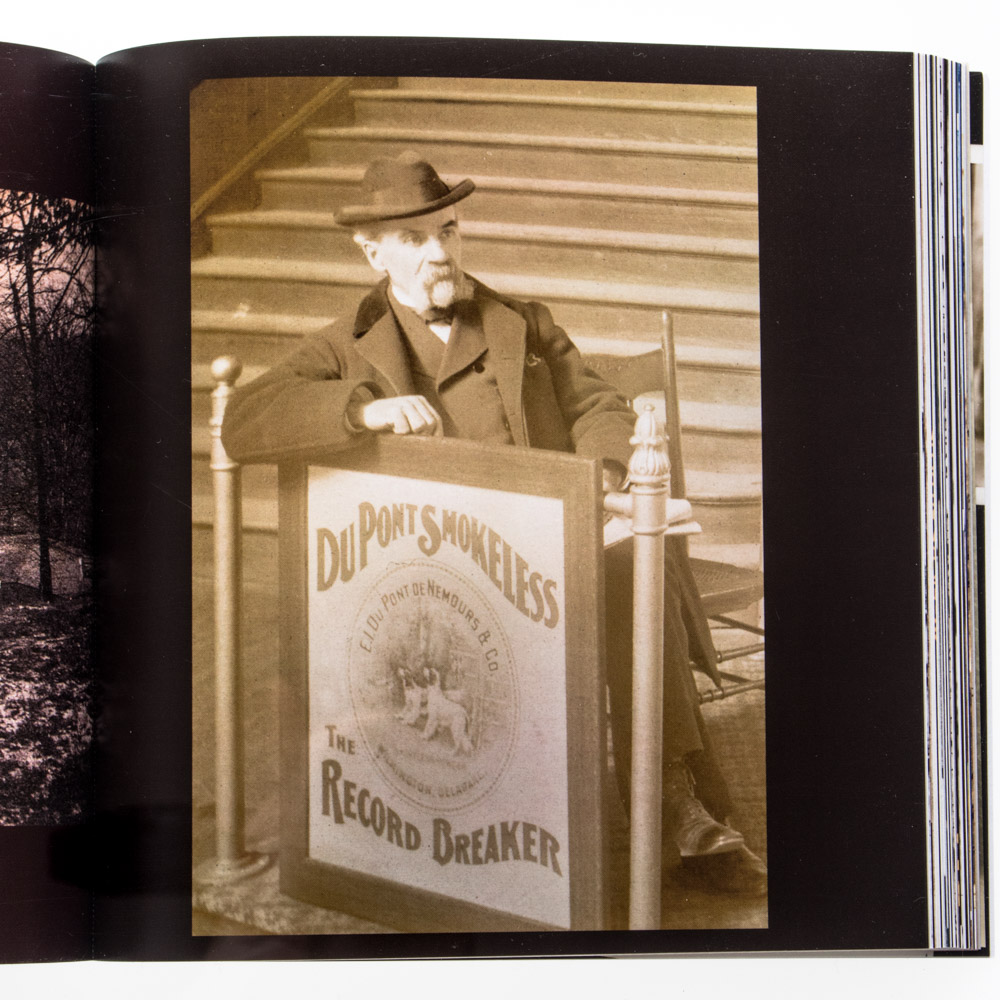
It’s uncanny, but I discovered a Toledo artist connection with my photographic French immigrant ancestor, Pierre Gentieu, who, in the 1800’s lived 500 miles away from Toledo in Wilmington, Delaware and worked for the DuPont Powder Company. One of Toledo’s most famous artists (who is also one of the artist-founders of the Toledo Museum of Art), Edmund Henry Osthaus (1858-1928), painter of dogs, had a regular advertising gig with DuPont for decades. See his work for DuPont on his page, and read about my connection here. My long-time project researching Pierre inspired this bigger project researching historic artists of Toledo. I called my Toledo project, my giant Pierre project, and I was amazed when I found a Toledo artist connection to Pierre.
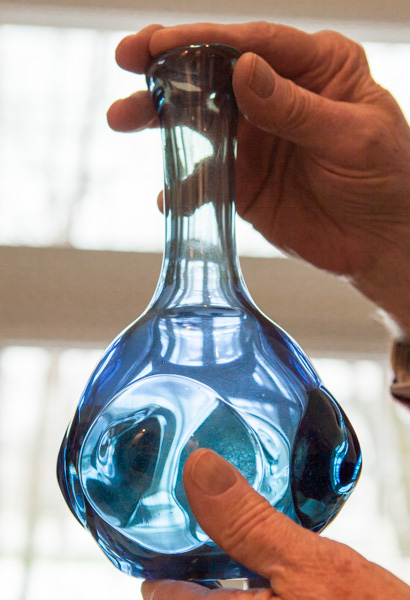
Allen Roudolf (d. 2014), collector, with his blue vase with prunts made by Dominick Labino (1910-1987). Scientist and artist, Labino literally melded industry and art. He was a leader of the Studio Glass movement in 1962, inventing many formulations necessary to the process. Labino glass is uniquely organic in shape and color. Baker O’Brien, his apprentice, is the only person who knows his color formulations. His rise to fame in the 60’s and 70s is legendary. He is in the best museum glass collections in the world.
The Toledo Museum of Art has undergone a lot of changes during the time I have been writing this website. Much of my blog posts are devoted to this subject. The annual Toledo Area Artists Exhibition, that went on for nearly 100 years, was ended in 2014, killing the art community. The museum hated local artists so much that they torpedoed this long-standing tradition. In 2022, famous Impressionist paintings from the museum’s core collection were sold under suspicious circumstances – two to the same secret buyer for $57M. And now, in 2025, 57 of the remaining Impressionist to 20th Century masterworks are being lent to Auckland, New Zealand, without even telling the stakeholders, literally taken off the museum walls during a special show! They are presently gutting and rearranging the museum under the guise of DEI. (A little late for the changing times, but Toledo has always been behind the curve.) For the money? What seems to be racist, ageist, and inappropriately political, the museum makes its own artists now. In 2008, I had high hopes for once again living in Toledo, where I grew up and enjoyed the museum throughout my childhood and youth, but after too many years of being in this sad city, it is great to be back in New York.
“The superpower that an art museum has is when something goes up on the wall, it’s considered good. We set the canon.”
Adam Levine, 11th Director of The Toledo Museum of Art

1903 clipping describes groups and departments forming at the Toledo Museum of Art. Immediately after George and Nina Stevens accepted the directorship of the 2-year old museum, their vision for a museum that “took art away from exclusive capitalism and gave it to the people” began to take shape, including progressive plans for community groups and art classes.

The museum has always been free and everyone has always been welcome. But that wasn’t good enough for the radical DEI outsiders who came in and took it over. They could care less about the great art collection, and as for the community, they reduced it to a 2-mile radius, thus discriminating against all the rest of Toledo. They are robbing Toledo of their cultural heritage and they are
 Edward Drummond Libbey and Florence Scott Libbey.
Edward Drummond Libbey and Florence Scott Libbey.
